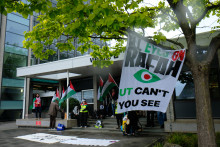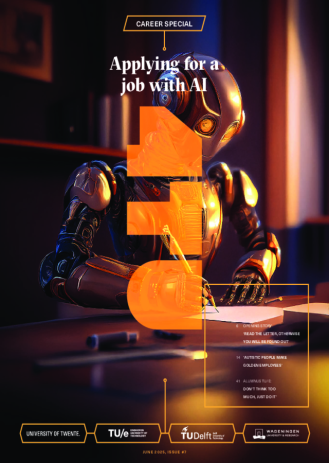It is not only employees who are calling PA&O about the model, says Ireen Miessen, the policy adviser for employment conditions at the UT, `there are a number of people calling who are trying to figure out what their personal boundaries are within the optional model (kuezemodel), and if we can make exceptions to the rules. No, this isn't possible to do.' Due to the large number of incoming calls, there is now one full-time employee hired at the help desk to answers questions about the new model.
This might have something to do with the new optional choice bonus (keuzebonus) being offered. Starting in 2009, for each employee there is an amount of 500 euros `reserved.' This amount can be exchanged for targets that the UT can reimburse tax-free to employees. In 2009, these targets are: additional pension, life-course savings, bicycle maintenance expenses, costs for a new bicycle, commuting costs, or contributions for labor unions and professional associations. `It is indeed something new for the UT,' says Miessen. `Only Tilburg has a similar arrangement. The introduction of a keuzebonus was a union proposal, and the UT had an amount of money `lying around' for local employment conditions, which had not yet been designated for anything.'
According to Miessen employees should consider the keuzebonus as a kind of `gift certificate.' `It can easily be used to earn some extra money. With only a mouse click on the web application, it's settled,' she said. It is not yet clear at PA&O whether or not the keuzebonus has attracted more employees. Miessen: `We can only make the comparisons with 2008 in October of 2009, because we haven't received all the figures from 2008. Employees were still able to use the old model until October 1.'
The statistics from 2007 are well known, and they show that out of 2,680 employees, 1,043 have made use of the optional model. The most popular targets were for commuting costs reimbursements (597 employees), followed by purchasing a bicycle (293 employees) and lastly, for exchanging paid leave for extra salary (257 employees). The `pregnancy leave prolongation' target was only used by one employee, as was the target `study leave.' Miessen: `We also know that certain groups at the UT don't use the optional model. Those are mostly new or international employees. They don't know the model exists. For other groups of employees, October is clearly the optional model month, and I've even heard talk about this in the corridors from people who are waiting to use it.'
In case the keuzebonus is not used this year, the amount is transferred to 2010. Only when an employee is fired is it grounds for completely `losing' it. `There is one exception for employees who are eligible for the keuzebonus in 2009, but are not allowed to use the optional model because their temporary employment ends in 2009. They can receive the keuzebonus at the end of their employment as part of their bruto bonus, but then it is not tax-free,' explains Miessen.
She readily admits that the optional model is `fiscally complicated.' `It's difficult to completely understand, so don't try to comprehend all the fine details. My advice is to just trust the UT and enter the scheme. There is no easier way to make money, especially because of the web application. If someone chooses the commuter costs target, a single commuting distance of 40 km can add up to a benefit of 1,600 to 1,700 euros per year.'







